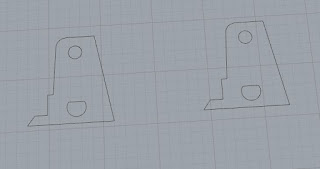This week I continued to model the Bic Lighter.
I found some exploded diagrams on the lighter to find some of the elements I may have forgotten and better understand the shapes I am trying to create.
I then got to recreating the plastic holders that protrude from the casing though I am unsure how to curve them to fit the oval shape of the casing. Tracing a horizontal image using the picture frame command and the poly line tool and control point curve tools.
Later I found there is a cap on the bottom of the lighter used to trap the gas so i began doing this simple model.
extruded and caped oval
complete with the gas cap nub
Now back to the jet valve that i wasn't very satisfied with
tracing the outline of the jet valve I was able to better recreate the form. once I revolved a single side.
Here i'm inserting a cylinder to Boolean subtract and create a proper valve
yay.
I decided I should also model the child lock found on new lighters
I began creating the shape with use of the control point curve tool to approximate the shape.
Then curve extruded the shape
I still have quite a bit of work ahead and I am still very confused as to how to recreate the "hood" (large hollow metal piece where the flame exits) and same for the oddly shaped "fork" though i have created a 2D outline of it
(pictured below).
 |
| Close up of hood piece |
 |
| side view of "fork" |
 |
| "fork" 2d |
Finally I need to have everything measuring the proper dimensions in rhino.
Well... time to get back to work 😵.














Comments
Post a Comment